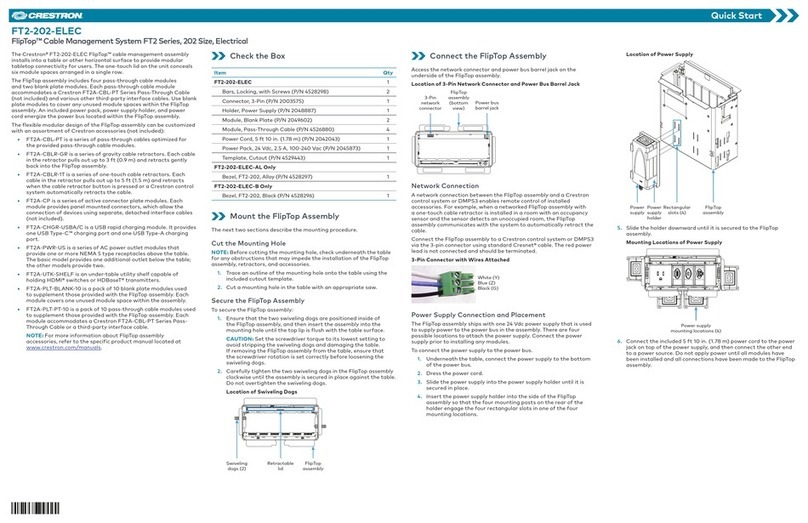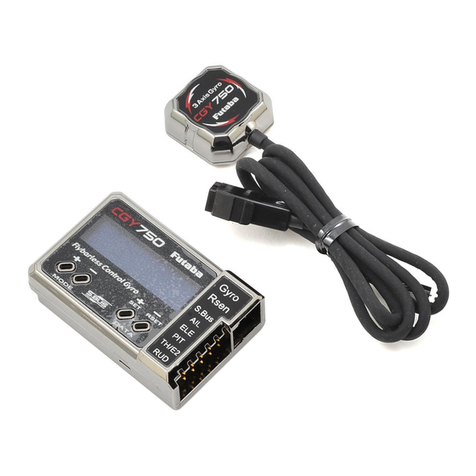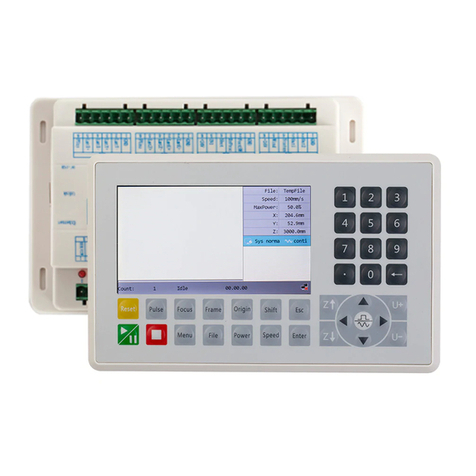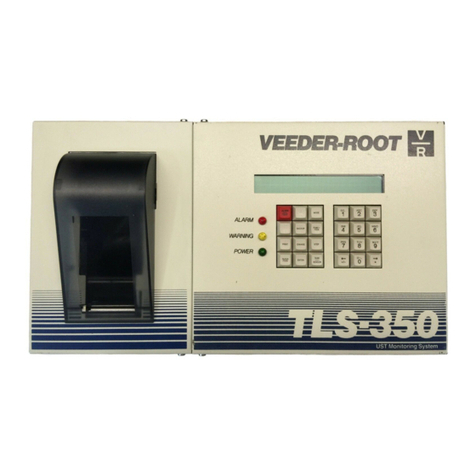Rolls-Royce Helicon X3 User manual

User Manual
Rolls-Royce Helicon X3
P&T Control System
PRODUCT INFORMATION
Yard:
Alianca
NB/Hull No.:
AL 021
Project No.:
13S000411
Installation Id.:
BOW1 / BOW2
PORT_MP / STBD_MP
Vessel type:
Offshore
Owner:
Asgaard Navegac„o
Date:
03/07/2014
Revision:
A
Copyright © 2010 Rolls-Royce plc
The information in this document is the property of Rolls-Royce plc and may not be cop-
ied or communicated to a third party, or used for any purpose other than that for which it
is supplied without the express written consent of Rolls-Royce Marine plc.
This information is given in good faith based upon the latest information available to
Rolls-Royce plc, no warranty or representation is given concerning such information,
which must not be taken as establishing any contractual or other commitment binding
upon Rolls-Royce plc or any of its subsidiary or associated companies.
1 Introduction
2Safety
3 System Description
4 Delivery Specification
5 Technical Data
6 Operating Instructions
7 Maintenance Instructions
8 Trouble Shooting
9 Contact List
10 Spare Parts
11 Tools
12 Design Drawings
13 Revision
14 Subsuppliers Manuals


Copyright © 2010 Rolls-Royce plc
The content of this document is the property of Rolls-Royce plc and may not be redistributed in whole or in part thereof without
express written consent of Rolls-Royce plc.
1
Doc. No.: 13S000411
Revision: A
Introduction
1 Purpose ........................................................................................................3
2 Warranty ....................................................................................................... 3
3 Contents ....................................................................................................... 3
4 Target Groups .............................................................................................. 4
5 Terms and Abbreviations ........................................................................... 4

Copyright © 2010 Rolls-Royce plc
Doc. No.: 13S000411
Revision: A

Introduction
Page 3 of 6Doc. No.: 13S000411
Revision: A
Copyright © 2010 Rolls-Royce plc
1
1Purpose
The purpose of the Helicon X3 User Manual is to provide the necessary information to
plan and perform a safe and correct operation of the installed delivered system, as well
as under-standing the basic functionality of the equipment. The User Manual covers
both operational and technical aspects of the system.
The personnel involved in using the system must have relevant experience and training
with regards to the use of such systems.
2 Warranty
The product has a limited warranty. Please note that the warranty will be void if the
equipment is misused or not handled in accordance to prescribed standards, for example
dismantling the equipment to a level greater than described.
3 Contents
This manual contains the following chapters:
Chapter Contents
1. Introduction This chapter specifies the purpose and target groups for the
manual. It also contains list of used abbreviations and a
specification of the document conventions.
2. Safety This chapter specifies safety instructions to follow when
operating and maintaining system.
3. System Description This chapter briefly describes the system components, the
system design and the functionality.
4. Delivery Specification This chapter specifies the delivered equipment.
5. Technical Data This chapter contains technical specifications and
performance data.
6. Operating Instructions This chapter describes how to use the Helicon X3 system.
7. Maintenance Instructions This chapter describes how to maintain the Helicon X3
system, including both preventive and corrective actions.
8. Trouble Shooting This chapter describes how to act when a malfunction occur
in the Helicon X3 system.
9. Contact Information This chapter contains contact information for Rolls-Royce
Marine, Dept. Propulsion Ulsteinvik and Rolls-Royce World
Wide Support Organization.
10. Spare Parts This chapter specifies recommended spare parts for the
Helicon X3 system.
11. Tools This chapter describes required and recommended tools for
the maintenance of the system to use during the installation.
12. Design Drawings This chapter consists of design drawings that serve as an
information source about the installed system for the
installation.
13. Revision This chapter contains the revision history for the total binder.
14. Subsuppliers Manuals This chapter contains documentation from other suppliers
than Rolls-Royce, if such has been delivered by RRM.

Introduction
Page 4 of 6 Doc. No.: 13S000411
Revision: A
Copyright © 2010 Rolls-Royce plc
4 Target Groups
The User Manual is primarily intended for the user of the system. The user must be
properly trained in using and maintaining the system.
The installation of the system components must be made by yard mechanics with
experience in fitting marine electronic equipment. Cabling into the units, wire
termination and screen/shield termination should be made by yard electricians that have
a certificate of apprenticeship or equal qualification on ship electrical installation.
Commissioning and testing must be carried out by field service personnel from Rolls-
Royce Marine, Dept. Propulsion Ulsteinvik or qualified service engineers from Rolls-
Royce Marine Global Support Network (GSN).
5 Terms and Abbreviations
Abbreviation or term Description
AC/DC Alternating Current/ Direct Current
AQM Aquamaster
AZP Azipull Thruster
BC Backup Control
CAN Controller Area Network
CCW Counter Clock Wise
CW Clock Wise
DC/DC Direct Current/ Direct Current
ESD Electrostatic Discharge
EU European Union
GSN Global Support Network
GUI Graphical User Interface
I/O Input/Output
LCD Liquid Crystal Display
LED Light Emitting Diode
MP Main Propulsion
NC Normally Closed
PMS Power Management System
PTI Power Take In
PTO Power Take Out
RC Remote Control
RPM Revolutions Per Minute
RR Rolls-Royce
RRM Rolls-Royce Marine
RUP Running Up/Down Program
SAT Sea Trial Acceptance Test
STBD Starboard
TCNS Thruster Compass Nozzle Swing-Up
TT Tunnel Thruster
VVolt

Introduction
Page 5 of 6Doc. No.: 13S000411
Revision: A
Copyright © 2010 Rolls-Royce plc
1
VAC Volts Alternating Current
VDC Volts Direct Current
Abbreviation or term Description

Introduction
Page 6 of 6 Doc. No.: 13S000411
Revision: A
Copyright © 2010 Rolls-Royce plc

Copyright © 2010 Rolls-Royce plc
The content of this document is the property of Rolls-Royce plc and may not be redistributed in whole or in part thereof without
express written consent of Rolls-Royce plc.
2
Doc. No.: 13S000411
Revision: A
Safety
1 Introduction .................................................................................................. 3
2 Disclaimer .................................................................................................... 3
3 Safety Instructions ...................................................................................... 4
3.1 Safety Functions ............................................................................................4
3.1.1 Pitch Control .......................................................................................4
3.1.2 RPM Control Electric Engine .............................................................. 4
3.1.3 Azimuth Control ..................................................................................5
3.1.4 Dynpos and Joystick ..........................................................................5
3.1.5 Autopilot .............................................................................................5
4 Safety Messages ..........................................................................................6

Copyright © 2010 Rolls-Royce plc
Doc. No.: 13S000411
Revision: A

Safety
2
Page 3 of 6Doc. No.: 13S000411
Revision: A
Copyright © 2010 Rolls-Royce plc
1Introduction
This chapter provides information regarding safety precautions that must be taken to
prevent injury to people and damage to equipment.
Whoever is responsible for the installation, operation or maintenance of this Rolls-
Royce system, is obliged to read this chapter and fully understand its content before any
installation, operation or maintenance of the system may take place.
2 Disclaimer
Undertaking any work envisaged by this document may either directly or indirectly
create risks to the safety and health of the person undertaking the work or the product
and/or its components while the work is being performed.
It is the responsibility of the user to protect the health and safety of the persons
undertaking the work as well as risk to the product and/or its components. Therefore the
user must ensure that appropriate controls and precautions are identified and taken in
relation to the work envisaged by this document in accordance with the relevant
statutory and legal and industrial requirements.
Neither this document, nor its use, in any way absolves the user from the responsibility
to ensure that the controls and precautions referred to above are implemented.
If any Rolls-Royce product design related features which could create risks to persons,
the product and/or its components are identified, Rolls-Royce should be contacted
immediately.
It is the user's responsibility to make all relevant hazard identifications and risk
assessments of all the activities associated with the use of this document.
It is the user's responsibility to design and implement safe systems of work and to supply
safe equipment (including, without limitation, safety equipment) and training
(including, without limitation, health and safety training) to anyone using this document
to work on products to which it relates.
A user without relevant experience of working in accordance with this document, or
with products to which it relates, should seek appropriate advice to identify the health
and safety controls and precautions that need to be taken while working.
Technical assistance can be sought from Rolls-Royce and will be subject to Rolls-
Royce's terms and conditions.

Safety
Page 4 of 6 Doc. No.: 13S000411
Revision: A
Copyright © 2010 Rolls-Royce plc
3 Safety Instructions
This Rolls-Royce system is a remote control system that is controlling propulsion units
on the vessel. By operating the system, the thrusts direction and pitch/speed
performance can be controlled.
The operator must at all times be aware of:
• Consequences of operating the system to prevent injury to people, damage of
equipment, damage to the vessel operated and damage to the surroundings.
3.1 Safety Functions
A number of safety functions are included in the system. These functions will become
operative if a failure should occur in the propeller control system itself, or in external
systems connected to the propeller control system.
Note: The backup control system has only interface to the control levers. The
backup control system does not have interface to external control
systems like Dynpos, Joystick or Autopilot
Note: No azimuth restrictions or load control functions are included in the
backup system. When operating using the backup system, the operator
must be careful not to overload the engine or the propeller system. If a
load control system is included in the Rpm Drive, this will still be in
operation.
Note: The safety functions described underneath will only be available if the
thruster(s)/gear(s) have got the described function in the first place.
3.1.1 Pitch Control
The pitch control is one of the redundant functions in the control system. The backup
control system will automatically be engaged if a serious failure occurs in the normal
control system. This includes loss of power supply to the normal control system, halt in
the normal control cpu, failure on the normal control order potentiometer in the lever on
the manoeuvre station currently in command, failure on the normal control field bus and
failure on the normal control feedback potentiometer. Alarm will be given in the control
system and in the ship's alarm system.
3.1.2 RPM Control Electric Engine
The RPM control is a redundant function in the control system. The backup control
system will automatically be engaged if a serious failure occurs in the normal control
system. This includes loss of power supply to the normal control system, halt in the

Safety
2
Page 5 of 6Doc. No.: 13S000411
Revision: A
Copyright © 2010 Rolls-Royce plc
normal control cpu, failure on the normal control order potentiometer in the lever on the
manoeuvre station currently in command and failure on the normal control field bus.
Alarm will be given in the control system and in the ship's alarm system.
3.1.3 Azimuth Control
The azimuth control is a redundant function in the control system. The backup control
system will automatically be engaged if a serious failure occurs in the normal control
system. This includes loss of power supply to the normal control system, halt in the
normal control cpu, failure on the normal control order potentiometer in the lever on the
manoeuvre station currently in command, failure on the normal control field bus and
failure on the normal control feedback potentiometer. Alarm will be given in the control
system and in the ship's alarm system.
3.1.4 Dynpos and Joystick
If operating using an external Dynpos or Joystick system and a failure occurs either on
the pitch order, the rpm order or the azimuth order signal from the external system, the
external system is disengaged and the propeller responds to the control lever order on
the manoeuvre station in command. Alarm will be given in the control system and in the
ship's alarm system.
3.1.5 Autopilot
If operating using an external autopilot system and the azimuth lever order on the
manoeuvre station in command is changed more than the adjustable limit, normally 20
degrees, the autopilot is disengaged and the thruster will respond to the control lever.
This is indicated by blinking the Autopilot button, and the buzzer will sound until the
Autopilot button is pressed to acknowledge the mode change back to lever control.

Safety
Page 6 of 6 Doc. No.: 13S000411
Revision: A
Copyright © 2010 Rolls-Royce plc
4 Safety Messages
Safety messages in this manual are always accompanied by a safety alert symbol and a
signal word. The safety alert symbol is used to alert the reader about a potential risk of
personal injury or damage to the equipment.
The following types of safety messages are used within this manual:
Warning: Risk of... Indicates the presence of a hazard which could result in death or
personal injury.
Caution: Indicates the presence of a hazard which could result in damage to
equipment or property and seriously impact the function of the equipment.
Note: Alerts the reader to relevant factors and conditions which may impact the
function of the equipment.

Copyright © 2010 Rolls-Royce plc
The content of this document is the property of Rolls-Royce plc and may not be redistributed in whole or in part thereof without
express written consent of Rolls-Royce plc.
3
Doc. No.: 13S000411
Revision: A
System Description
1 General ......................................................................................................... 3
2 System Overview ......................................................................................... 3
3 Design ..........................................................................................................4
3.1 Lever .............................................................................................................4
3.2 Control Panel .................................................................................................5
3.3 Emergency stop and dimmer panel (optional) ...............................................7
3.4 Indicators ....................................................................................................... 8
3.5 Viewcon .........................................................................................................8
3.6 Controller cabinet ..........................................................................................9
3.7 I/O Cabinet ....................................................................................................9
4 Functions ................................................................................................... 10
4.1 Pitch Control ................................................................................................10
4.1.1 Normal Control ................................................................................. 11
4.1.2 Backup Control .................................................................................11
4.1.3 Backup Control Operation ................................................................11
4.1.4 Backup Control Limitations ............................................................... 11
4.1.5 Local Control ....................................................................................11
4.1.6 Pitch Indication .................................................................................12
4.1.7 Pitch Order Scaling ..........................................................................12
4.2 Thruster Azimuth Control ............................................................................. 12
4.2.1 Normal Control ................................................................................. 12
4.2.2 Backup Control .................................................................................12
4.2.3 Backup Control Operation ................................................................13
4.2.4 Backup Control Limitations ............................................................... 13
4.2.5 Local Control ....................................................................................13
4.2.6 Azimuth Indication ............................................................................13
4.3 RPM Control ................................................................................................14
4.3.1 RPM Control Electric Drive Motor ....................................................14
4.3.2 External RPM Control .......................................................................14
4.3.3 RPM Order Output ...........................................................................14
4.3.4 Propeller/Shaft RPM Indication ........................................................ 14
4.4 Command Transfer ......................................................................................14
5 Location of Manufacturing Number ......................................................... 14
5.1 Marking Locations .......................................................................................14
5.1.1 Company Identification .....................................................................15

Copyright © 2010 Rolls-Royce plc
Doc. No.: 13S000411
Revision: A

System Description
3
Page 3 of 16Doc. No.: 13S000411
Revision: A
Copyright © 2010 Rolls-Royce plc
1 General
This chapter provides an overview of the Helicon X3 system and a technical description
of the main components that give the required knowledge about the system.The figures,
drawings and text in this chapter are general and may not comply to the actual
installation on the vessel. For details on the delivered equipment, see chapter 4 Delivery
Specification.
2 System Overview
The Helicon X3 remote control system is a micro-processor-based system, controlling
the propulsion units on the vessel. The following main functions are included:
• Combinator control, allowing accurate and reliable control of the propeller pitch and
motor speed (RPM). The combinator curve optimises the pitch/speed performance to
give the best operational conditions and fuel economy.
• Pitch control, allowing accurate and reliable control of the thruster pitch.
• Speed control, allowing accurate and reliable control of the motor speed (RPM).
• Direction control, allowing accurate and reliable control of the thrust direction.
• Follow-up backup control from control levers.
Helicon X3 consists of the following main components:
• Instruments, screens, levers and Viewcon on the bridge (1).
• Electrical cabinets in the instrument room (2) and thruster room (4).
• Instruments, screens and levers in the engine control room (3).
Helicon X3 may interface several external systems (5), like Dynamic positioning
systems and Autopilots.

System Description
Page 4 of 16 Doc. No.: 13S000411
Revision: A
Copyright © 2010 Rolls-Royce plc
3 Design
3.1 Lever
Each thruster has its own lever. Their main functions are:
• Control of pitch, RPM and azimuth direction (dependant of application)
• In operation
• Command transfer
• Lever in command
• Back-up control
• Alarm
The control lever has integrated buttons and indication lamps for command transfer,
backup system on/off, alarm indication/buzzer and push button for reset of buzzer. The
display in the base shows set command (pitch and direction) from the lever.
The lever contains two redundant electronic circuits, one for the normal control system
and one for the backup system.
Bridge
Instrument room ECR
Fore bridge
Dynpos
Joystick
Autopilot
GPS
Automation
LOG
VDR
El.unit El.unit El.unit
I/0 I/0 I/0I/0I/0
El.unit El.unit
Aft bridge
Slave Chair
Viewcon
Main Chair
Port Wing
Stbd Wing
1
23
4
5

System Description
3
Page 5 of 16Doc. No.: 13S000411
Revision: A
Copyright © 2010 Rolls-Royce plc
Figure 1 Lever
3.2 Control Panel
The control panel (touch screen) is the main user interface for the operator and gives an
overview of all the thrusters on the vessel. It shows the status of the system, indicates
thruster forces, displays alarms, and shows selected modes. The flat button on the top of
the screen is for dimming the illumination of the LCD display.
The screen is divided in two areas: a menu area in the left part of the screen, and a bigger
command area to the right. The menu buttons to the left selects the content of the
command area.
Symbol Command Description
In operation/running Thruster is started and ready to use.
Control transfer Transfer command between bridge and ECR.
Command transfer Take command. If light is lit, the lever is in command.
Backup control Independent controller that takes over if the main
controller stops. Redundant system.
Alarm Alarm indicator, see alarm screen for details.

System Description
Page 6 of 16 Doc. No.: 13S000411
Revision: A
Copyright © 2010 Rolls-Royce plc
There is one command page for each thruster, in addition to one system overview page
and one alarm page. The overview page shows the most essential information for all
thrusters, but to activate functions or to view all available information for a thruster, the
particular thrusters' page must be selected.
The graphical design is based on the following principles:
• All functions pages are only one click away
• Large and simple buttons which are easy to read.
• Same design theme for all clickable objects.
• To avoid unintentional activation of functions, all function activation buttons require
press on the accept button to proceed.
Figure 2 Menu area
Table of contents
Popular Control System manuals by other brands
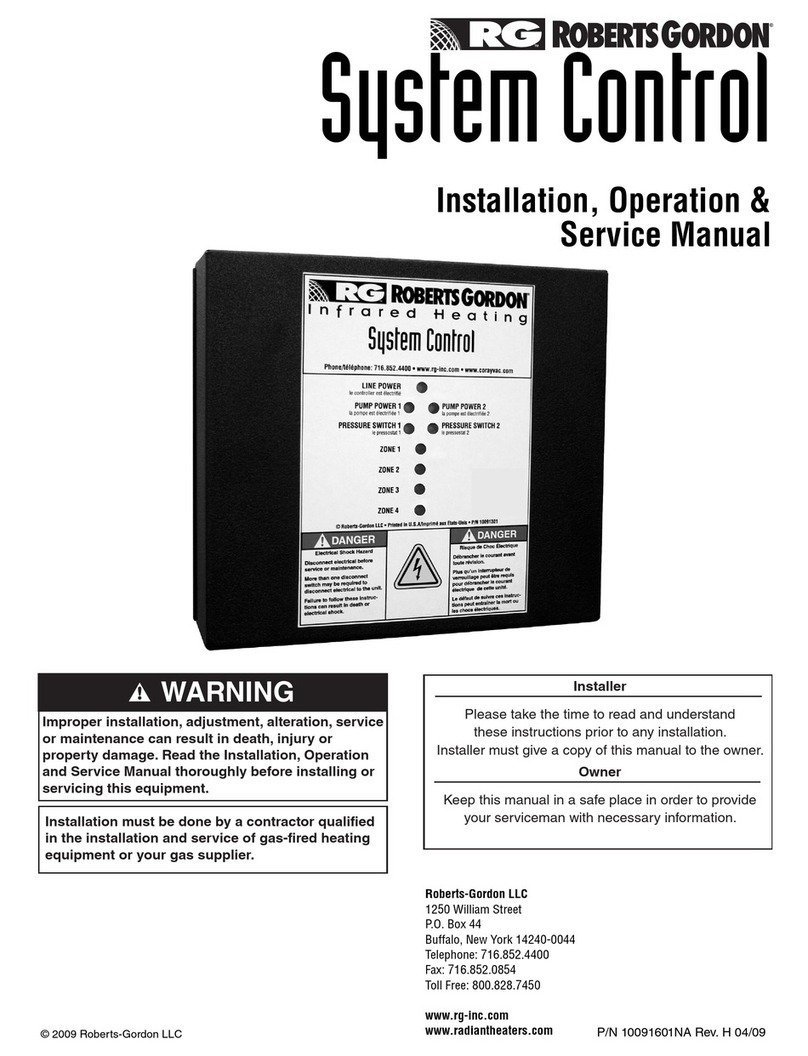
Roberts Gorden
Roberts Gorden System Control HP 120 V 1 Installation & operation

FXConnectX
FXConnectX STAGEPRO-8 user guide
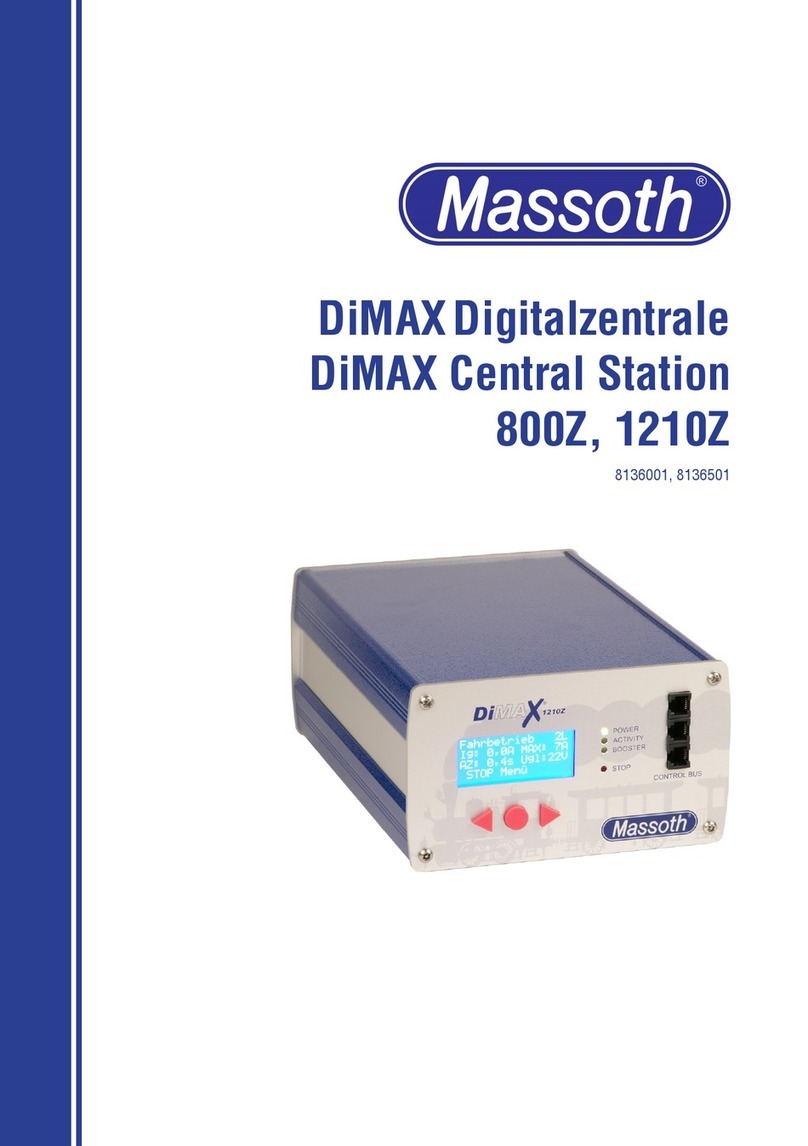
Massoth
Massoth DiMAX 800Z manual
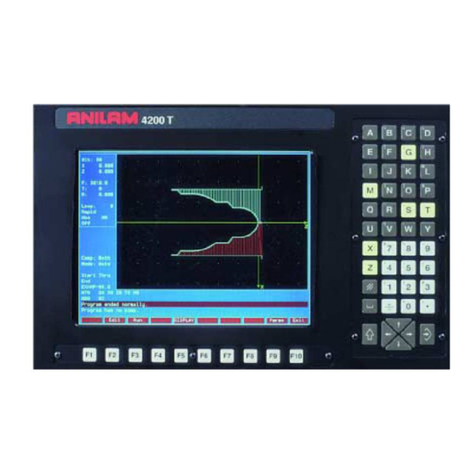
Anilam
Anilam 4200T Programming and operations manual

Helmer
Helmer Legacy i.Series user guide

Rain Bird
Rain Bird ESP-LXD Installation & troubleshooting guide

Modine Manufacturing
Modine Manufacturing Atherion MPR System manual

Stahl
Stahl TRANBERG 4900 Installation and user manual
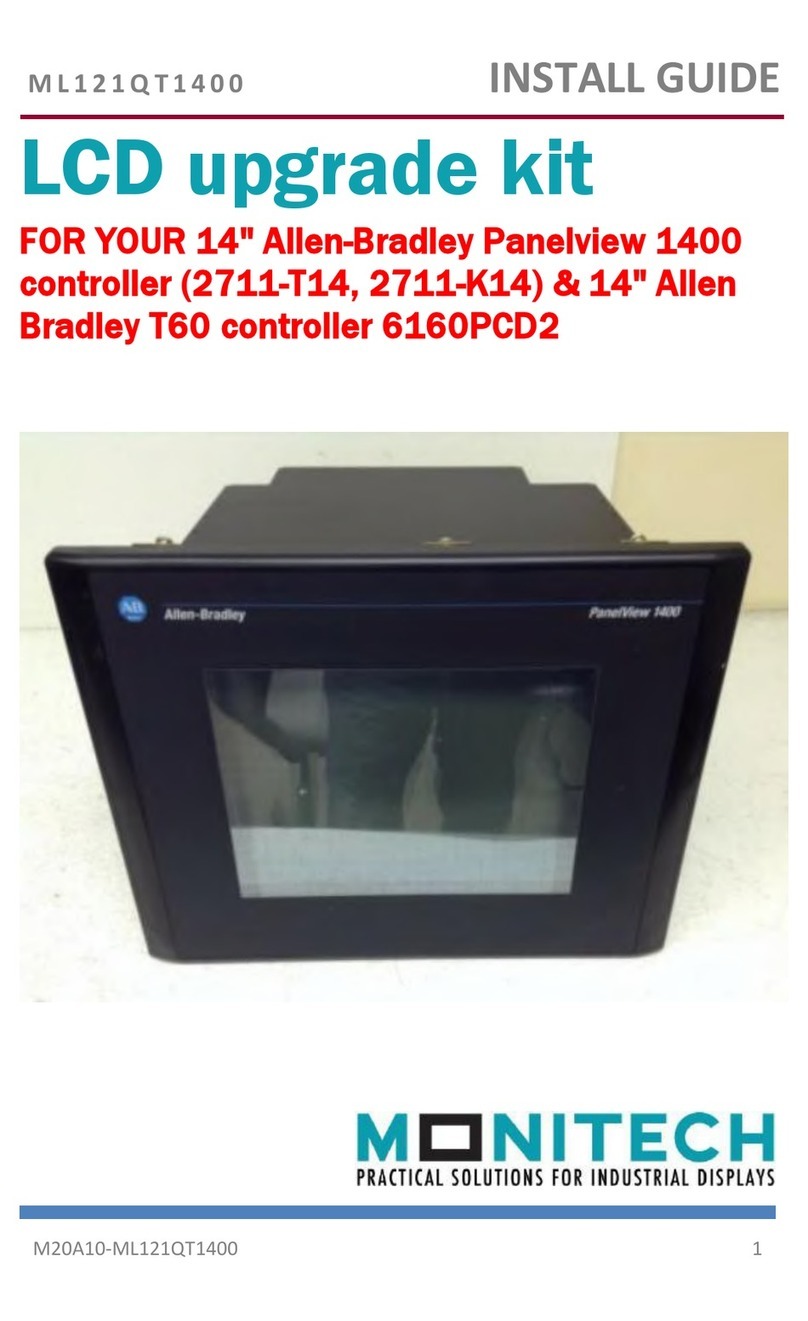
Monitech
Monitech ML121QT1400 install guide

Contro l4
Contro l4 Control4 Smart Home quick start guide
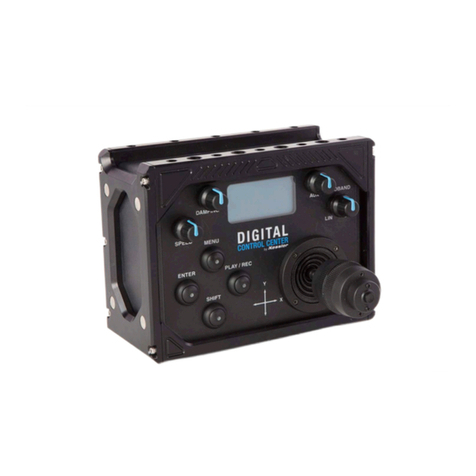
Kessler
Kessler SECOND SHOOTER quick start guide
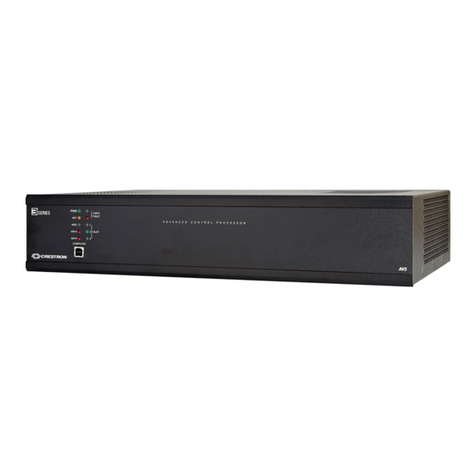
Crestron
Crestron 3 Series reference guide
